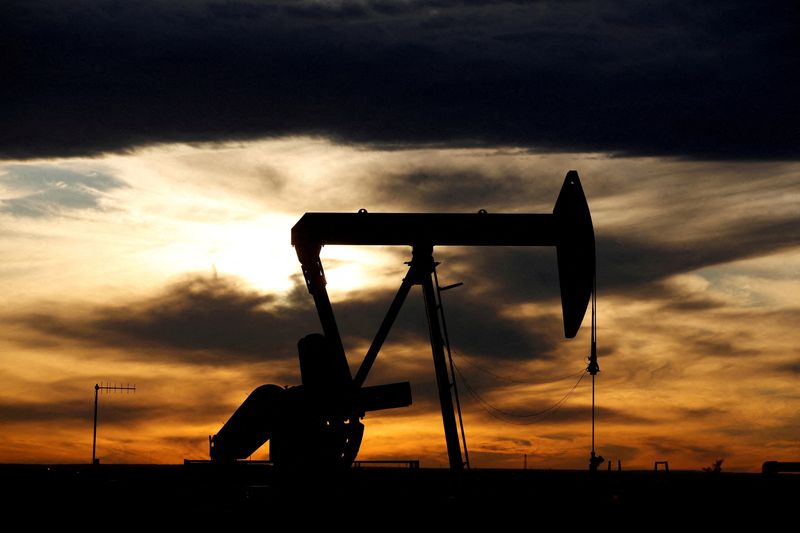By Scott DiSavino
NEW YORK (Reuters) -Oil prices fell about 1% to a one-week low on Tuesday on demand concerns following the release of negative economic news from Germany and China, while investors remained cautious ahead of a decision by the US Federal Reserve on interest rates.
futures fell 72 cents, or 1.0%, to settle at $73.19 a barrel, while US West Texas Intermediate crude fell 63 cents, or 0.9%, to settle at $70.08.
That was the lowest closing price for Brent since December 10 and lowered Brent’s premium over WTI to a 12-week low of $3.54 per barrel, based on February contracts.
Analysts have said that if Brent’s premium to WTI falls below $4 a barrel, it doesn’t make as much economic sense for energy companies to send ships to pick up the oil, which should result in lower U.S. exports.
In China, the world’s second-largest economy, industrial production growth accelerated slightly in November, while retail sales disappointed. Calls for Beijing to step up consumer-oriented stimulus are kept alive as policymakers brace for more US trade tariffs once President-elect Donald Trump takes office for a second time.
In Germany, business morale deteriorated more than expected in December, according to a survey by the Ifo Institute, which was weighed down by companies’ pessimistic assessment of the coming months amid geopolitical uncertainty and an industrial slump in the largest economy of Europe.
“The only good thing about Germany’s just-published Ifo index is that it is the last major macro indicator published this year. Time to end a year that will go down as the second consecutive year of economic stagnation,” say analysts at ING. , a bank, said in a note.
In the world’s largest economy, US retail sales rose more than expected in November, amid an acceleration in car and online purchases.
The report from the US Commerce Department did not affect expectations that the Fed would cut rates on Wednesday for the third time since the US central bank initiated its policy easing cycle.
However, investors will be watching U.S. policymakers’ forecasts for signals about whether the Fed will be more cautious in 2025 as economic indicators such as retail sales data point to continued resilience and inflation remains persistent.
After aggressively raising rates in 2022 and 2023 to curb the rise in inflation, the Fed began cutting rates in September.
Lower interest rates lower financing costs, which can stimulate economic growth and oil demand.
OIL FACILITIES AND STOCKS
In the US, oil storage data from the American Petroleum Institute trade group is expected later on Tuesday and from the US Energy Information Administration on Wednesday.
Analysts forecast that U.S. energy companies pulled about 1.6 million barrels of crude from storage in the week ending Dec. 13. [ENERGYUSA] [ENERGYAPI]
If true, this would be the first time energy companies have pulled oil from storage for four weeks in a row since August, compared with an increase of 2.9 million barrels in the same week last year and an average decline of 2.4 million barrels compared to August. the past five years (2019-2023).
In Kazakhstan, a member of the OPEC+ group of countries, oil and gas condensate production is now expected to reach 87.8 million tonnes in 2024, down from the previously expected figure of over 88 million tonnes (1.76 million barrels per day). Minister Almasadam Satkaliyev said this.
The European Union has adopted a 15th package of sanctions against Russia, another OPEC+ member, over its invasion of Ukraine, including tougher measures against Chinese entities and more ships from Moscow’s so-called shadow fleet.

Britain also imposed sanctions on ships it claimed were carrying illegal Russian oil.
OPEC+ includes the Organization of the Petroleum Exporting Countries and allies such as Kazakhstan and Russia, which have agreed to curb production to support oil prices.


